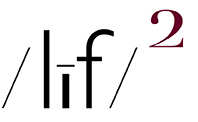“A round straw hat, the funnel leaning left, the stairway leaning right, the white drawbridge with its railings made by circular chains, white suspenders on the back of a man in the steerage below, round shapes of iron machinery, a mast cutting into the sky, making a triangular shape … I saw shapes related to one another. I was inspired by a picture of shapes and underlying that a feeling I had about life.” ~ Alfred Stieglitz
When confronted by a scene of abject human misery and defeat, Alfred Stieglitz saw the scene as a composition, a “picture of shapes” that bore no relationship to the facts–albethey factually described–of the scene itself. The picture–The Steerage–is hailed by some critics as one of the greatest photographs of all time because it captures in a single image both a formative document of its time and one of the first works of artistic modernism.
Re: Modernism: Stieglitz, together with O’Keeffe, was considered to be amongst those who helped start the American Modernism movement; O’Keeffe with her paintings and Stieglitz with his photography and his gallery. Photography wise, Stieglitz, who began his photography career as a Pictorialist, eventually rejected Pictorialism–extensively manipulated photographs intended to be “artistic”–and adopted and advocated the practice of straight photography–a “pure” picture making technique that utilized the medium’s intrinsic, authentic characteristics.
Stieglitz was convinced that, if photography were to rise to the status of fine art, the medium had to free itself from its mimicry of painting and embrace its ability to describe, with clarity and fidelity, the facts of real life. Concurrent with the embrace of straight photography was an idiom bending shift away from symbolist referents to those evincing a sense of realism, in particular, the facts of everyday life, aka: the commonplace.
All of the above written, it would suggest that straight photography became a thing 'round about the creation of The Steerage photo which was made in 1907. OK, granted that was a momentous moment in the history of the medium but, the question remains, what makes the photo one of the greatest photographs of all time?
In addition to being one of the first, if not the actual first, straight photograph to be considered as fine art, it might also be the first photograph made in a Formalist tradition; i.e. a photograph that was made prioritizing the form or structure of the work over its content–the creator, aka: Stieglitz, was focused on elements like line, tone, space, shapes (elements of art) over historical context or societal impact. It would appear that Stieglitz was intent on creating an ideal image, a nearly Platonic belief in an ideal visual form.
The photograph points up to the extent to which so much (but not all) fine art photography relates to the commonplace, but doing so as part of an attempt, by the intervention of the photographer’s eye, to transform the most obvious of things into their unique potential as objects (aka, prints). It is as if everything waits to be photographed cuz it can only evince its apotheosis, as it were, in the image that reveals that ideal potential in visual terms.
All of the above written, it can be considered 2 ways; a.) as a very accurate description of my picturing making M.O. inasmuch as I strive to create photographs that exhibit “ideal visual form” as I see it in the quotidian world. My intent is not to imply / suggest that beauty can be found everywhere. Rather, my intent is to create a thing / an object, i.e. a photographic print, that is, in and of itself, beautiful (or, at least, visually interesting), or, b.) to suggest that I believe, iMo, that the overwhelming number of all-time “great” photographers, especially those who practice straight photography, think, see, and photograph in a manner not unlike that of Steiglitz.
